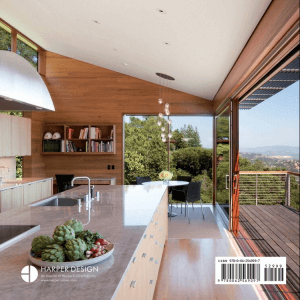From Guest Blogger Robert Jen: Eco-Friendly Real Estate–Nine Advantages Of Green Building

Energy Efficiency
Coal is a non-renewable energy source that is among the most widely used today. When designing green buildings, designers and architects do their best to reduce dependency on energy from such sources. One way in which they try to do this is by installing solar panels in order to utilize energy from the sun. Another way involves designing windows so that they allow as much natural light as possible. This reduces the need for artificial light which requires electricity. These and many other methods ensure that a building uses energy in an efficient way.
Desirability
Buildings are designed and constructed to provide occupants with a place to live and work. This means that indoor environmental quality is an important consideration. The conditions inside a building, such as air quality, thermal conditions, ergonomics and lighting, all affect the level of desirability for such a space. A good indoor environment is one that improves the quality of life of the residents, reduces stress and protects their health. Green buildings accomplish this thanks to a reduced use of materials that emit elements dangerous to occupants’ health (plastic, for instance), as well as with windows that allow plenty of natural light to the indoor areas.
Low Operation & Maintenance Costs
The biggest difference between green and traditional buildings is that the former boast unique construction features that allow for an efficient use of resources such as energy and water. By incorporating plenty of daylight in indoor areas, green buildings greatly reduce the amount of electricity used in lighting systems. On one hand, designing and constructing a green building may be more expensive than a non-green one. But on the other hand, the reduced operation and maintenance costs of green buildings make them comparably cheaper down the road.
Water Conservation
The conservation of water has to do with preserving water sources by using them only minimally. It also involves ensuring that both today and future generations are able to enjoy a reliable supply of clean water. There are a number of ways in which eco-friendly buildings preserve water. Examples include using alternative water sources such as rainwater, reducing the strain on shared water resources by installing systems that purify water and enable recycling, as well as reducing water waste via installing efficient plumbing fixtures.
Natural Cooling & Heating
In order to minimize dependency on traditional sources of energy, but still, provide the comfort and coziness of traditional homes, green buildings are designed and constructed in a way that allows them to take advantage of winds for the purposes of cooling the indoor areas in the summer. Another important consideration is the positioning of windows, which may allow you to prevent your home from being heated by the sun during early morning hours. Similarly, the same windows that allow plenty of sunlight to reach every room in your apartment or home also serve to conduct heat during colder days.
Waste Management
Architects and designer of green buildings also incorporate waste management strategies in their projects. A number of eco-friendly buildings now incorporate sewage plants or mini-sewage plants in order to take care of waste management efficiently. In addition to generating much less waste than traditional homes, many green homes also recycle wastewater and other types of waste to use for gardening purposes.
Preserving Infrastructure
Depending on factors such as location, climate and so on, materials that are used for constructing and building traditional homes differ from one region to the next. On the other hand, the construction of green buildings often involves sourcing the necessary materials locally. This has to do with the fact that transporting the materials to the construction site from afar also has a negative effect on the environment regardless of the mode of transportation.
Healthier & Safer
According to research conducted by the Environmental Protection Agency, indoor air is between two and ten times more polluted than outdoor air. This is where green homes and buildings come in. Greed buildings are designed to minimize exposure to airborne toxins and pollutants and maximize the quality of indoor air. This is because eco-friendly home and building designers often incorporate measures like proper ventilation, high-efficiency air filters and other measures oriented toward reducing mildew and mold.
Less Maintenance
Green buildings are usually built with physical processes and materials in a way that allows their minimal use without compromising the quality of the outcome. In other words, green buildings use materials that are long lasting, in addition to recycling and reusing many other materials. Such minimalism means that occupants don’t need to invest or deal with maintenance as much they do when it comes to traditional homes.
To know more about the eco-friendly real estate: http://newstreet.ca/
